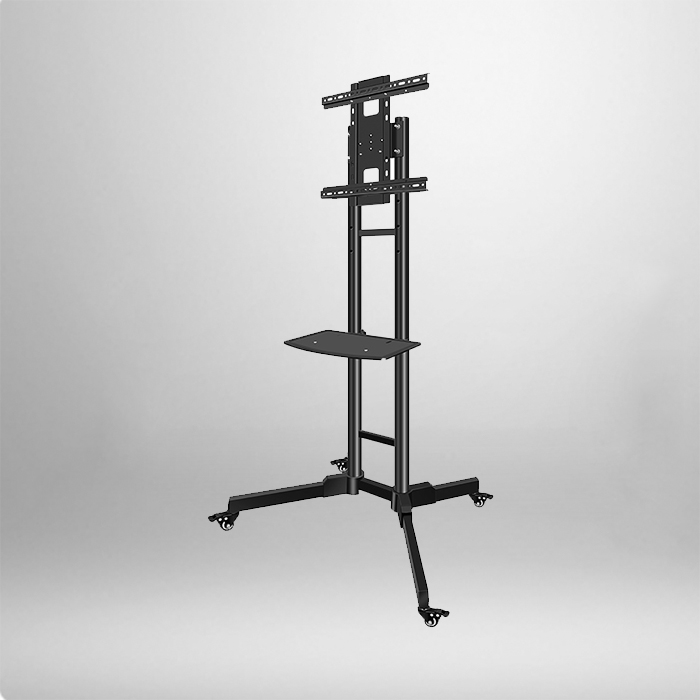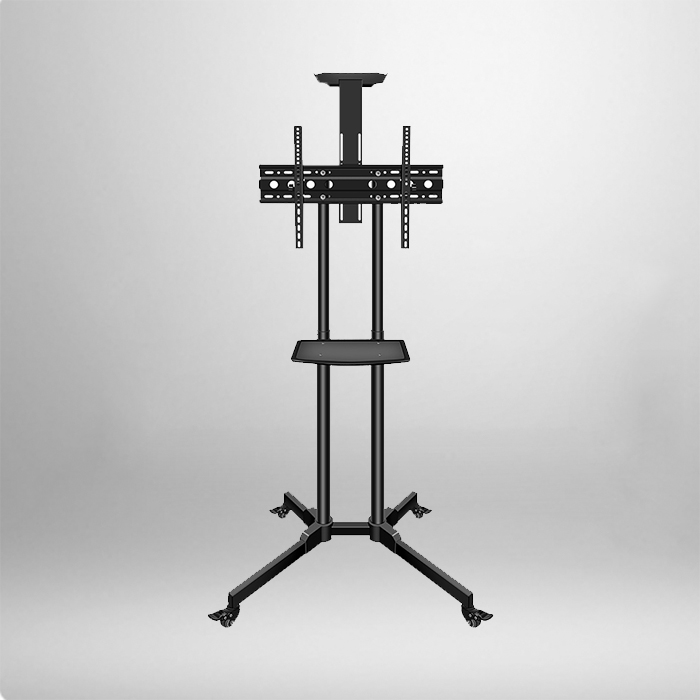
Mobile TV stands are wheeled structures built to support televisions while enabling easy movement, differing from fixed mounts or static stands. Their design prioritizes adaptability, making them a go-to choice for spaces where TV placement needs to shift—whether for practicality, comfort, or functionality. From homes to commercial settings, these stands solve the limitations of permanent TV setups, turning a stationary device into a flexible tool.
A standout advantage of mobile TV stands is their adaptability to diverse spaces. In residential homes, they shine for families who want to move the TV from the living room to the kitchen for a cooking tutorial, or to the guest room for visitors. For renters, they eliminate the need to drill holes in walls (a common restriction with fixed mounts), letting you enjoy a properly positioned TV without damaging the space. In commercial settings, they’re even more valuable: hotels use them in event halls to adjust TV placement for weddings or conferences, while gyms roll them between workout areas so members can watch videos during sessions. This versatility means one stand can serve multiple purposes across different rooms.
Design details also make mobile TV stands practical. Most models feature locking wheels—a crucial feature that lets you secure the stand in place once you’ve found the perfect spot, preventing accidental rolling. Many also include adjustable height settings: you can raise the TV for standing viewers (like in a retail store) or lower it for seated audiences (such as in a home theater setup). Some stands add extra functionality, too, like built-in shelves for streaming devices, DVD players, or soundbars, or cable management slots to hide messy cords—keeping the space neat and organized.
Durability is another key factor. Quality mobile TV stands are made from sturdy materials like steel or heavy-duty plastic, capable of supporting TVs ranging from 32 inches to over 80 inches. The best stands have a wide, stable base that prevents tipping, even if someone bumps into them—critical for homes with kids or busy commercial areas. Weight capacity is clearly labeled on most stands, so you can easily match the stand to your TV’s weight without risk of damage.
When choosing a mobile TV stand, there are a few essential considerations. First, match the stand’s weight and size capacity to your TV—a stand designed for small TVs will struggle to support a large, heavy model. Second, think about the space you’ll use it in: if you have hardwood floors, look for stands with rubber wheels to avoid scratches; if you need to move it through narrow doorways, a compact base is better. Third, consider extra features: do you need a stand that tilts the TV for better viewing angles? Or shelves to store accessories? Prioritizing features that align with your needs ensures the stand adds real value.

Maintenance is simple. Wipe the stand’s surface with a dry cloth to remove dust, and check the wheels regularly—if they start to squeak, a small amount of lubricant (like silicone spray) will keep them rolling smoothly. Tighten any loose screws or bolts every few months to maintain stability.
In conclusion, mobile TV stands offer a flexible, practical solution for anyone who doesn’t want to be tied to a single TV location. Their adaptability, durability, and thoughtful design make them useful in homes, offices, and commercial spaces alike. By choosing a stand that fits your TV and needs, you can enjoy the freedom to move your TV wherever it’s most useful—enhancing how you watch and use your device.


